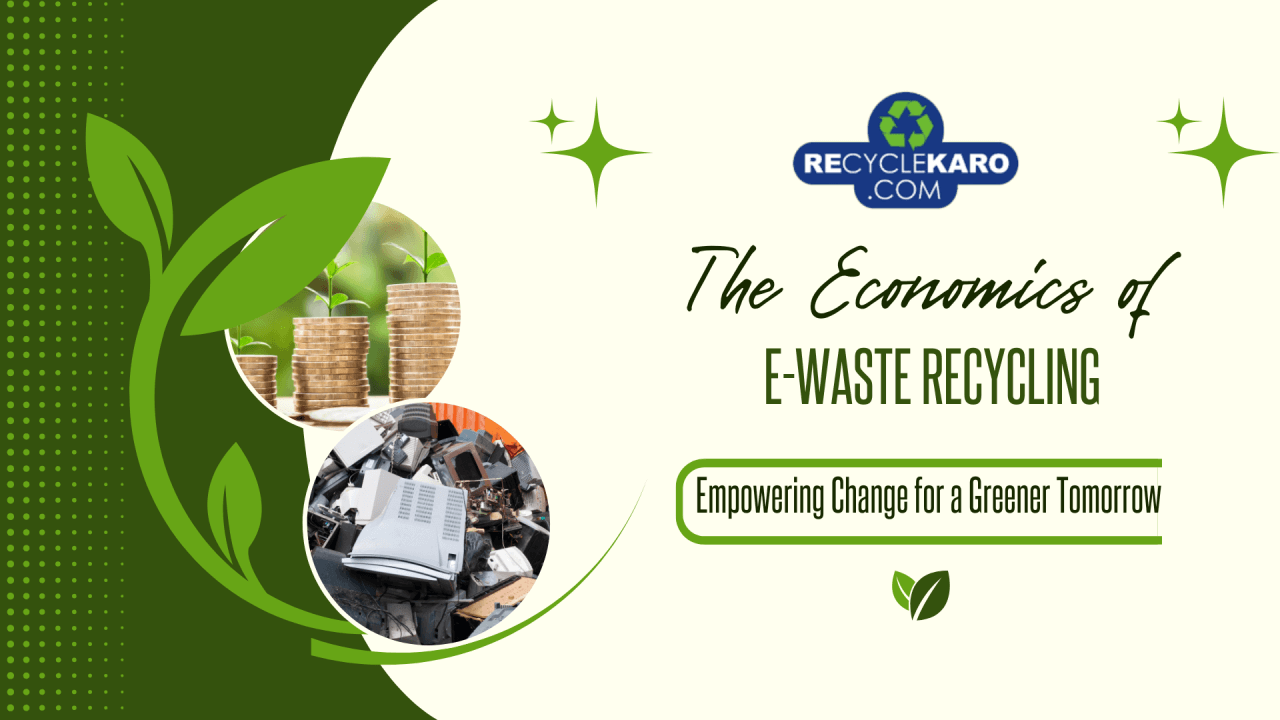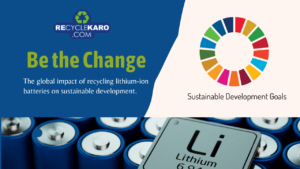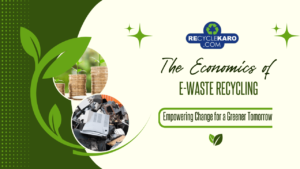Effective E waste Disposal Methods in India [2025]

E-waste, or electronic waste, has emerged as a pressing environmental and health concern globally, particularly in rapidly developing countries like India. As technology evolves and consumer electronics become obsolete at an unprecedented rate, the challenge of managing e-waste effectively is more critical than ever.
This blog will explore how to dispose of e-waste responsibly, the methods available in India, the importance of proper disposal, and the steps individuals and businesses can take to contribute to sustainable e-waste management.
Understanding eWaste
E-waste refers to discarded electronic devices that are no longer functional or desired. This category includes a wide array of items such as:
- Consumer Electronics: Mobile phones, computers, laptops, televisions, and gaming consoles.
- Home Appliances: Refrigerators, washing machines, microwaves, and air conditioners.
- Office Equipment: Printers, scanners, and fax machines.
- Telecommunication Devices: Modems and routers.
The improper disposal of e-waste poses significant risks due to the presence of hazardous materials like lead, mercury, cadmium, and brominated flame retardants. These substances can leach into the environment and adversely affect human health and ecosystems if not handled correctly.
The Importance of Proper E-Waste Disposal
Environmental Protection
E-waste contains toxic components that can contaminate soil and water sources when disposed of improperly. Responsible disposal methods help prevent these hazardous materials from entering the environment.
Resource Recovery
Many electronic devices contain valuable materials such as gold, silver, copper, and rare earth metals. Proper disposal through recycling allows for the recovery of these resources, reducing the need for mining new materials and conserving natural resources.
Energy Conservation
Recycling e-waste is generally more energy-efficient than producing new materials from raw resources. For example, recycling aluminum saves up to 95% of the energy required to produce it from bauxite ore.
Public Health
Improper e-waste disposal can lead to serious health risks for communities exposed to hazardous materials. Responsible disposal practices help mitigate these risks and protect public health.
Compliance with Regulations
Many countries have established regulations governing e-waste disposal. Adhering to these laws not only promotes responsible behavior but also helps individuals and businesses avoid legal penalties.
Common E Waste Disposal Methods in India
In India, various disposal techniques exist for disposing of e-waste responsibly. Each method has its advantages and disadvantages. Here are some common approaches:
1. Recycling
Recycling is one of the most environmentally responsible options for disposing of e-waste. The e-waste recycling process typically involves several steps:
- Collection: E-waste is collected from consumers through drop-off centers or collection drives.
- Sorting: Collected e-waste is sorted based on its type and material composition.
- Dismantling: Devices are dismantled to extract valuable components such as metals and plastics.
- Material Recovery: Recovered materials are processed for reuse in manufacturing new products.
Advantages:
- Reduces environmental impact by preventing hazardous materials from entering landfills.
- Recovers valuable resources that can be reused in production.
Disadvantages:
- May involve transportation costs depending on the location of recycling centers.
- Requires specialized facilities and trained personnel to handle hazardous materials safely.
2. Donation or Resale
If electronic devices are still functional but no longer needed, donating or reselling them is an excellent way to extend their lifespan. This method not only reduces waste but also provides affordable options for those in need.
Advantages:
- Promotes reuse of electronics, reducing demand for new products.
- Helps individuals or organizations that may benefit from functional devices.
Disadvantages:
- Devices must be in working condition; otherwise, they may still contribute to e-waste if not disposed of properly.
- Requires effort to find suitable recipients or platforms for resale.
3. Manufacturer Take-back Programs
Many manufacturers offer take-back programs where consumers can return old electronics when purchasing new ones. These programs are often part of Extended Producer Responsibility (EPR) initiatives that hold manufacturers accountable for the lifecycle of their products.
Advantages:
- Simplifies the disposal process for consumers by providing convenient return options.
- Ensures that returned products are handled responsibly by the manufacturer or designated recycler.
Disadvantages:
- Availability may vary by manufacturer; not all companies offer take-back programs.
- Consumers may need to purchase new products to participate in these programs.
4. E-Waste Collection Drives
Local governments or non-profit organizations often organize collection drives specifically for e-waste. These events provide a convenient way for residents to dispose of their electronic devices safely.
Advantages:
- Raises awareness about e-waste issues within communities.
- Provides an accessible option for responsible disposal without cost barriers.
Disadvantages:
- Collection drives may only accept certain types of electronics.
- Limited frequency; may not be available year-round.
5. Landfilling (Not Recommended)
While landfilling is a common waste disposal method globally, it is not suitable for e-waste due to the hazardous materials contained within electronic devices. When e-waste ends up in landfills, toxic substances can leach into soil and groundwater.
Advantages:
- Simple method for disposing of waste without specialized facilities.
Disadvantages:
- Significant environmental risks associated with leaching hazardous materials.
- Does not recover valuable resources; contributes to resource depletion.
6. Incineration (Not Recommended)
Incineration involves burning waste at high temperatures to reduce its volume. While this method can manage certain types of waste safely, it is not suitable for e-waste due to toxic and hazardous waste emissions released during combustion.
Advantages:
- Reduces waste volume significantly.
Disadvantages:
- Releases harmful pollutants into the atmosphere.
- Does not recover valuable materials; contributes to air pollution.
The Role of Government and Regulations in E-Waste Disposal
Governments play an essential role in regulating e waste management through policies aimed at promoting responsible practices:
Extended Producer Responsibility (EPR)
EPR mandates that manufacturers take responsibility for their products throughout their lifecycle—encouraging them to design products that are easier to recycle and dispose of responsibly at end-of-life stages.
E-Waste Management Rules
In India, the E-Waste Management Rules (2022) outline responsibilities related to collection, recycling, and safe disposal practices for both manufacturers and consumers. These rules aim to reduce environmental impact while promoting sustainable practices within industries handling electronic waste.
Public Awareness Campaigns
Governments often conduct public awareness campaigns highlighting the importance of responsible e-waste disposal practices while encouraging citizens to participate actively in recycling programs / initiatives.
Conclusion
As technology continues to advance rapidly, effective management of electronic waste has become increasingly crucial for protecting both public health and the environment. Responsible e-waste management and disposal methods—such as recycling, donation, manufacturer take-back programs—offer sustainable solutions that minimize harmful impacts associated with improper handling of discarded electronics.
By understanding available options and taking proactive steps toward responsible electronic waste disposal practices—both individually and collectively—consumers and businesses alike can contribute significantly toward mitigating the adverse effects posed by growing volumes of electronic waste worldwide. Embracing sustainable practices today will pave the way for a cleaner tomorrow where technology coexists harmoniously with our planet’s health.



